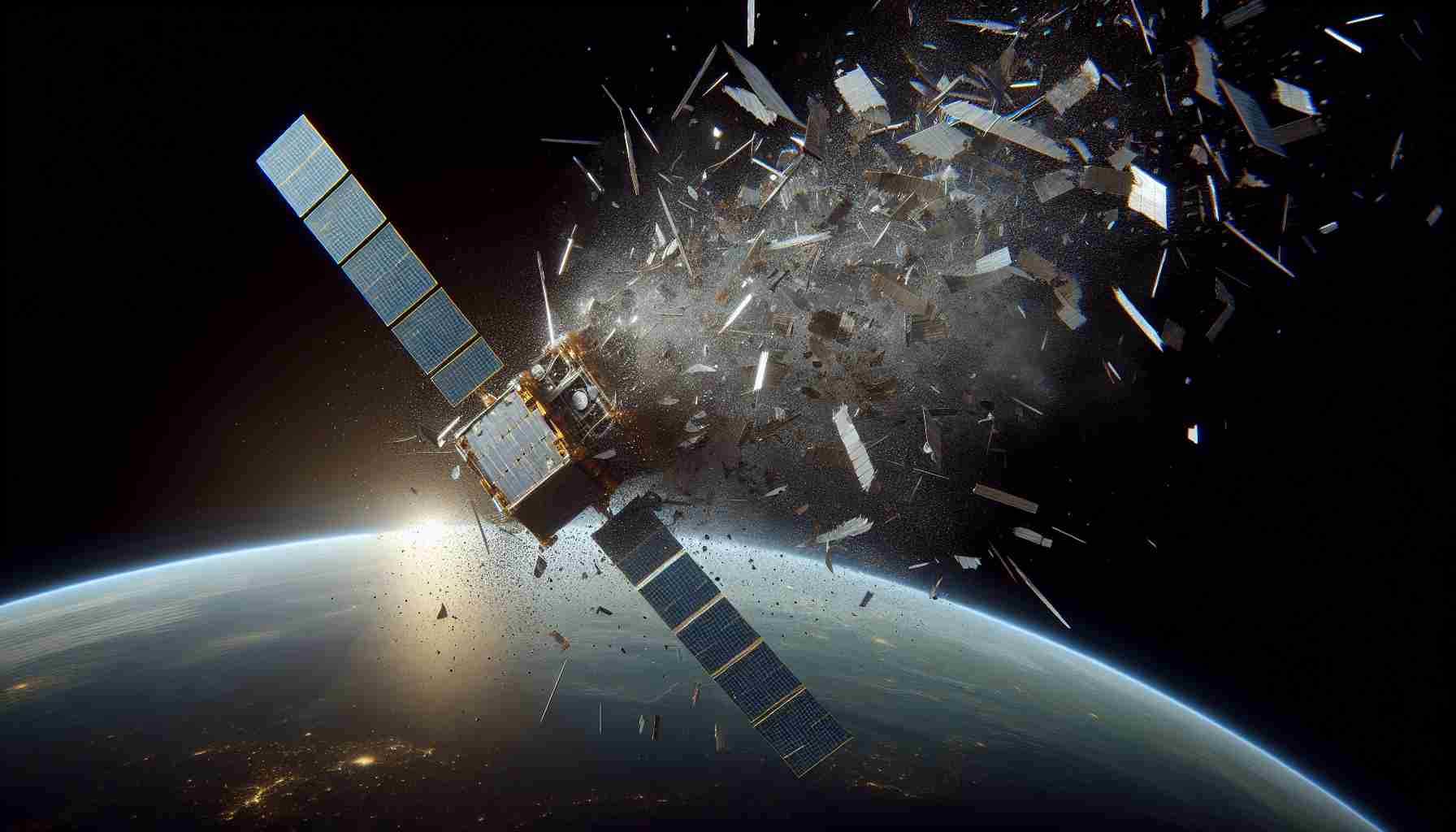
A communications satellite recently disintegrated in geostationary orbit, creating additional space debris and heightening collision risks for other satellites. The Intelsat 33e, which served communication needs across Europe, Africa, and parts of Asia-Pacific, encountered a catastrophic failure last Saturday, resulting in a complete loss of power and functionality. According to Intelsat, the situation appears dire, as recovery of the satellite is now deemed improbable.
Following the incident, the U.S. Space Force confirmed the satellite’s breakup, reporting the discovery of around 20 fragments. They reassured that no immediate threats had been detected and stated they would continue monitoring the situation to ensure the safety of the orbital environment. Although the exact cause of the breakup remains unknown, it is suspected that an explosion related to its propulsion system might have triggered the disaster.
Launched in August 2016, the satellite had a tumultuous operational life, with numerous technical issues arising soon after its deployment. These problems significantly shortened its expected lifespan, raising alarms about the vulnerability of similar spacecraft in the increasingly crowded geostationary orbit. Satellite industry experts have expressed concerns that the rise in debris from such incidents could lead to heightened risks of collisions in the future. As satellite launches continue, addressing the challenges posed by space debris is becoming increasingly urgent.
Satellite Fragmentation Raises Concerns Over Space Debris
The recent breakup of the Intelsat 33e satellite has spotlighted the growing issue of space debris in Earth’s orbit. While the U.S. Space Force reported the discovery of approximately 20 fragments from the disintegrated satellite, the event underscores a broader problem affecting both current and future space operations. As the number of satellites in space increases—over 3,500 active satellites were in orbit as of late 2023—the risk of collisions and the creation of additional debris has also surged.
What Are the Key Questions Surrounding Satellite Fragmentation?
1. What causes satellite fragmentation?
Satellite fragmentation can occur due to several reasons, including explosions linked to propulsion systems, collisions with other objects, or even degradation of materials over time. In the case of Intelsat 33e, an explosive failure related to its systems has been suggested but remains under investigation.
2. What are the potential risks associated with space debris?
Space debris poses significant risks, including collisions with operational satellites, which can destabilize services ranging from telecommunications to weather monitoring. Additionally, large fragments can also pose a threat to the International Space Station (ISS) and other crewed missions.
3. What measures are being taken to mitigate space debris?
Various organizations, including NASA and the European Space Agency (ESA), are actively researching debris mitigation strategies such as improving satellite design to minimize debris creation, implementing post-mission disposal plans, and developing technologies for debris removal.
Key Challenges and Controversies
The challenges associated with managing space debris are manifold. One major issue is the lack of comprehensive international regulations regarding satellite operation and debris management. While some countries have developed guidelines, there is currently no binding agreement on how to address the imminent threat posed by space debris.
Another controversy is the increasing trend of mega-constellations, such as SpaceX’s Starlink, which aim to provide global internet coverage but also contribute significantly to the already crowded orbits. These projects raise questions about space governance and the responsibility of private companies in managing space traffic and debris.
Advantages and Disadvantages of Addressing Space Debris
Advantages:
– Enhanced safety: Implementing strict guidelines and creating debris removal technologies can significantly decrease the chances of collisions in space.
– Sustainability: Responsible satellite operations and debris management can promote sustainable use of space, ensuring that future generations can continue benefiting from satellite technologies.
Disadvantages:
– High costs: Developing and deploying debris removal technologies could entail substantial financial investments that some countries and companies may be unwilling or unable to make.
– Technological challenges: The complexity of tracking and removing debris presents significant technical hurdles, which may lead to delays in implementation.
As the space industry continues to expand, the urgency of addressing the issue of satellite fragmentation and space debris becomes increasingly critical. A collaborative approach that involves governments, private sector players, and international organizations will be essential to develop effective solutions.
For more information about space policies and debris management, visit NASA and ESA.



